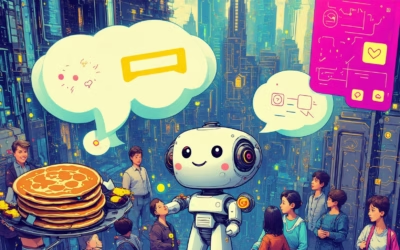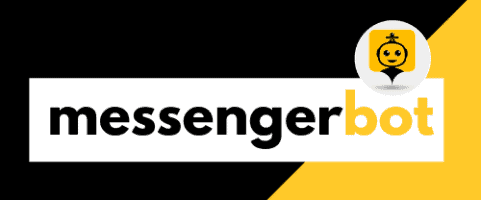Key Takeaways
- Enhance User Engagement: Implementing effective chatbot testing strategies can significantly improve user interactions and satisfaction.
- Streamline Operations: A robust chatbot performance testing approach ensures your chatbot handles queries efficiently, reducing the need for human intervention.
- Boost Conversion Rates: Well-tested chatbots guide users through the sales funnel effectively, increasing lead generation and conversions.
- Maintain Brand Trust: Consistent and accurate responses from chatbots build user trust and enhance your brand’s credibility.
- Utilize Comprehensive Checklists: Create a chatbot testing checklist to cover all critical testing elements for optimal performance.
- Leverage Advanced Tools: Utilize tools like Botium and TestMyBot to automate and streamline your chatbot testing processes.
In today’s digital landscape, mastering the chatbot test is essential for businesses looking to enhance customer interactions and streamline communication. As organizations increasingly rely on chatbot testing to ensure their AI systems are effective, understanding the nuances of how to test chatbots becomes crucial. This article will delve into the importance of chatbot performance testing, exploring key strategies for identifying chatbots in conversations and the techniques that can help distinguish between human and AI responses. We will also examine the Turing Test and its implications for chatbots, discuss the role of AI in healthcare diagnostics, and highlight common questions that challenge these systems. By the end of this guide, you will have a comprehensive chatbot testing checklist and insights into utilizing online resources for effective chatbot testing. Join us as we uncover the essential strategies for effective chatbot testing and diagnosing AI conversations.
Understanding the Importance of Chatbot Testing
Chatbot testing is a critical process that ensures the effectiveness and reliability of automated communication systems. It involves evaluating the performance, functionality, and user experience of chatbots to ensure they meet business objectives and user expectations. By implementing a robust chatbot testing strategy, businesses can enhance user engagement, streamline customer support, and ultimately drive conversions.
What is chatbot testing?
Chatbot testing refers to the systematic evaluation of a chatbot’s capabilities, including its ability to understand user queries, provide accurate responses, and maintain a natural conversational flow. This process encompasses various testing methodologies, such as functional testing, performance testing, and user acceptance testing. To effectively test a chatbot, follow these comprehensive steps:
- Define Objectives: Clearly outline what you want to achieve with the chatbot. This could include user engagement, lead generation, or customer support.
- Create Test Scenarios: Develop various user scenarios that reflect real interactions. Consider different user intents, such as inquiries, complaints, or requests for information.
- Utilize Testing Tools: Employ tools like Botium or Chatbot Testing Frameworks that allow for automated testing of chatbot functionalities and responses.
- Conduct User Testing: Involve real users in the testing process. Gather feedback on the chatbot’s performance, user experience, and areas for improvement.
- Analyze Responses: Review the chatbot’s responses for accuracy, relevance, and tone. Ensure it aligns with your brand voice and provides helpful information.
- Monitor Performance Metrics: Track key performance indicators (KPIs) such as response time, user satisfaction scores, and conversation completion rates to evaluate effectiveness.
- Iterate and Improve: Based on the feedback and performance data, make necessary adjustments to enhance the chatbot’s capabilities and user experience.
- Test Across Platforms: If applicable, ensure the chatbot performs well across different platforms (e.g., website, Messenger Bot, mobile apps) to maintain consistency.
For authoritative insights on chatbot testing methodologies, refer to resources from the International Journal of Human-Computer Studies and industry reports from Gartner. These sources provide valuable information on best practices and emerging trends in chatbot technology.
Why is chatbot performance testing crucial for businesses?
Chatbot performance testing is essential for several reasons:
- Enhances User Experience: By identifying and resolving issues before deployment, businesses can ensure a smoother interaction for users, leading to higher satisfaction rates.
- Increases Efficiency: Effective testing helps streamline operations by ensuring that the chatbot can handle various user queries without human intervention, thus saving time and resources.
- Boosts Conversion Rates: A well-tested chatbot can effectively guide users through the sales funnel, increasing the likelihood of conversions and lead generation.
- Maintains Brand Reputation: Consistent and accurate responses help build trust with users, reinforcing the brand’s credibility in the market.
In conclusion, investing in chatbot testing is vital for businesses looking to leverage AI-driven communication tools effectively. By ensuring that chatbots perform optimally, companies can enhance user engagement and drive business growth.
Understanding the Importance of Chatbot Testing
Chatbot testing is a critical process that ensures the effectiveness and reliability of automated communication tools. It involves evaluating the performance, functionality, and user experience of chatbots to guarantee they meet the intended objectives. By conducting thorough chatbot testing, businesses can identify potential issues and enhance the overall interaction quality.
What is chatbot testing?
Chatbot testing refers to the systematic evaluation of a chatbot’s capabilities, including its ability to understand user queries, provide accurate responses, and maintain context throughout a conversation. This process often includes creating a chatbot testing checklist that outlines specific criteria for assessment. The goal is to ensure that the chatbot functions as intended and delivers a seamless user experience.
Why is chatbot performance testing crucial for businesses?
Chatbot performance testing is essential for several reasons:
- Enhancing User Experience: By identifying and resolving issues, businesses can improve user satisfaction and engagement. A well-tested chatbot can lead to higher retention rates and better customer relationships.
- Increasing Efficiency: Effective chatbot testing helps streamline operations by ensuring that the bot can handle inquiries without human intervention, thus saving time and resources.
- Building Trust: A reliable chatbot fosters trust among users. When customers know they can depend on accurate and timely responses, they are more likely to engage with the brand.
- Staying Competitive: In a market where many businesses are adopting AI technologies, ensuring that your chatbot performs optimally can provide a competitive edge.
For further insights on how to effectively test chatbots, consider exploring resources like Brain Pod AI, which offers advanced AI solutions for chatbot development and testing.
Exploring the Turing Test and Chatbots
The Turing Test, proposed by Alan Turing in 1950, serves as a benchmark for evaluating a machine’s ability to exhibit intelligent behavior indistinguishable from that of a human. This test involves a human judge interacting with both a machine and a human without knowing which is which. The goal is for the machine to engage in natural language conversations that are so convincing that the judge cannot reliably tell the difference.
Overview of the Turing Test and its significance
The significance of the Turing Test lies in its foundational role in artificial intelligence. It challenges developers to create chatbots that can mimic human conversation effectively. As of now, no chatbot has definitively passed the Turing Test. While advanced models like OpenAI’s ChatGPT and Google’s Bard have shown remarkable conversational abilities, they have not consistently fooled human evaluators in rigorous testing scenarios.
Notable chatbots that have attempted the Turing Test
Several chatbots have made notable attempts to pass the Turing Test:
- Eugene Goostman: In 2014, this chatbot claimed to have passed the Turing Test by convincing 33% of judges that it was a 13-year-old boy. However, this claim has faced skepticism regarding the test’s rigor and the chatbot’s limitations.
- OpenAI’s ChatGPT: While it has demonstrated impressive conversational skills, it still struggles with contextual understanding and emotional nuance, which are critical in human interactions.
- Google’s Bard: Similar to ChatGPT, Bard showcases advanced capabilities but has not yet achieved the level of passing the Turing Test.
Despite these advancements, chatbots often face challenges in maintaining context over long conversations and displaying genuine emotional intelligence. Researchers are continually exploring ways to enhance AI’s conversational abilities through deep learning and natural language processing. As technology evolves, the potential for a chatbot to pass the Turing Test may become more achievable.
Can a Chatbot Diagnose Disease?
Chatbots are increasingly being utilized in healthcare settings, leveraging artificial intelligence to assist in diagnosing diseases. However, it’s essential to understand both their capabilities and limitations. Here’s a closer look at how AI chatbot testing is applied in medical diagnostics.
How AI Chatbot Testing is Applied in Medical Diagnostics
AI chatbots can analyze user-provided symptoms and offer preliminary assessments based on extensive medical databases. They utilize machine learning algorithms to interpret data, which can lead to accurate suggestions for potential health issues. For instance, platforms like Brain Pod AI’s AI Chat Assistant are designed to guide users through symptom checkers, enhancing the diagnostic process. However, while these chatbots can provide valuable insights, they are not a replacement for professional medical advice.
Limitations and Ethical Considerations of Chatbots in Healthcare
Despite their advancements, chatbots have notable limitations. They cannot perform physical examinations or fully consider a patient’s medical history, which can lead to misinterpretations of symptoms. Ethical concerns also arise regarding patient privacy and data security. Users must be aware that while chatbots can assist in the diagnostic process, they should always consult healthcare professionals for definitive diagnoses. As technology evolves, the role of chatbots in healthcare is expected to expand, potentially improving their reliability in initial assessments.
Understanding Chatbot Limitations
Chatbots are powerful tools, but they have inherent limitations that can affect their performance in real-world applications. Understanding these limitations is crucial for businesses and users alike, as it helps set realistic expectations and improves interactions with AI systems. Here, we explore common questions that challenge chatbots and strategies for enhancing their responses.
Common Questions that Challenge Chatbots
Bots can be confused by various types of questions that challenge their programming and understanding. Here are some key types of questions that often perplex chatbots:
- Open-Ended Questions: Questions that require more than a simple yes or no answer can confuse bots. For instance, asking, “What do you think about the future of technology?” may lead to vague responses, as bots typically rely on predefined answers.
- Hypothetical Questions: Posing scenarios that require the bot to speculate can lead to confusion. An example is, “If you could choose any superpower, what would it be?” Bots lack the ability to form opinions or desires, making it difficult for them to respond meaningfully.
- Rhetorical Questions: Questions that do not require an answer, such as “Isn’t it a beautiful day?” can leave bots stumped, as they are programmed to seek engagement rather than recognize statements.
- Ambiguous Questions: Queries that are vague or have multiple interpretations, like “Can you tell me about the bank?” without specifying which bank, can lead to misunderstandings.
- Complex Questions: Multi-part questions, such as “What are the benefits of exercise, and how does it affect mental health?” can overwhelm bots, as they may struggle to parse and respond to each component effectively.
- Idiomatic Expressions: Phrases that are culturally specific or use metaphors, like “It’s raining cats and dogs,” can confuse bots that do not understand figurative language.
- Sarcasm or Humor: Questions that involve sarcasm or humor, such as “Do you think robots will take over the world?” can be misinterpreted, as bots may not recognize the underlying tone.
- Personal Experience Questions: Asking a bot about personal experiences, such as “What was your favorite vacation?” is inherently confusing, as bots do not have personal experiences or emotions.
Understanding these types of questions can help users interact more effectively with chatbots, leading to clearer communication. For further insights into chatbot capabilities and limitations, refer to resources like the Journal of Artificial Intelligence Research and industry blogs such as Chatbots Magazine.
Strategies for Improving Chatbot Responses to Complex Queries
To enhance chatbot performance, especially when faced with challenging questions, consider the following strategies:
- Implementing Contextual Awareness: Equip chatbots with the ability to understand context, allowing them to provide more relevant responses based on previous interactions.
- Utilizing Natural Language Processing (NLP): Leverage advanced NLP techniques to improve the bot’s understanding of user intent and nuances in language.
- Regularly Updating Knowledge Bases: Ensure that the chatbot’s knowledge base is frequently updated to include new information and common user queries.
- Feedback Mechanisms: Incorporate user feedback to refine chatbot responses and identify areas for improvement.
- Testing and Iteration: Conduct regular chatbot testing to identify weaknesses and iteratively improve performance through real-world scenarios.
By implementing these strategies, businesses can enhance their chatbot testing and performance, ultimately leading to better user experiences. For a comprehensive approach to chatbot testing, consider utilizing a chatbot testing checklist to ensure all aspects are covered.
How to Test if Someone is a Bot?
Techniques for Testing User Authenticity in Chat Environments
To effectively test if someone is a bot, consider the following comprehensive strategies:
1. **Analyze Response Patterns**: Bots often display predictable and repetitive response patterns. Look for generic replies that lack personalization or context. For example, if a user consistently responds with the same phrases regardless of the conversation’s direction, this may indicate bot behavior.
2. **Observe Typing Speed**: Bots can type at an unnatural speed, often responding almost instantaneously. If a user replies too quickly or with perfect grammar and punctuation, it may suggest they are not human.
3. **Engagement Level**: Evaluate the depth of the conversation. Bots typically struggle with nuanced discussions and may provide irrelevant or nonsensical answers when faced with complex questions. Ask open-ended questions that require thoughtful responses to gauge their engagement.
4. **Check for Contextual Awareness**: Bots often lack the ability to understand context. If a user fails to reference previous parts of the conversation or misunderstands simple context cues, they may be a bot.
5. **Use CAPTCHA or Similar Tests**: Implementing CAPTCHA challenges can help differentiate between bots and humans. These tests require users to complete tasks that are easy for humans but difficult for bots, such as identifying objects in images.
6. **Leverage Bot Detection Tools**: Utilize specialized software designed to detect bot activity. Tools like Botometer analyze Twitter accounts for bot-like behavior, while other platforms offer similar functionalities for various messaging services.
7. **Monitor for Inconsistencies**: Pay attention to inconsistencies in the user’s information or behavior. If a user claims to be from a specific location but their language or cultural references suggest otherwise, this could indicate bot activity.
For further reading on bot detection techniques, refer to the following authoritative sources:
– “Detecting Bots on Social Media” by the University of Indiana, which provides insights into behavioral patterns of bots.
– “The Science of Bots: How to Identify and Combat Them” published by the Pew Research Center, offering a comprehensive overview of bot detection methodologies.
Tools and Resources for Effective Bot Detection
Utilizing the right tools can significantly enhance your ability to identify bots in online interactions. Here are some recommended resources:
1. **Botometer**: This tool analyzes Twitter accounts for bot-like behavior, providing a score that indicates the likelihood of an account being automated. It’s a valuable resource for social media platforms.
2. **CAPTCHA Services**: Implementing CAPTCHA solutions like Google reCAPTCHA can help filter out bots by requiring users to complete simple tasks that are easy for humans but challenging for automated systems.
3. **AI Chat Assistant**: Platforms like [Brain Pod AI](https://brainpod.ai/ai-chat-assistant/) offer AI-driven solutions that can help in identifying and managing bot interactions effectively.
4. **Custom Scripts**: For developers, creating custom scripts that analyze user behavior and response patterns can be an effective way to detect bots in specific environments.
By integrating these tools and techniques into your chatbot testing strategy, you can ensure a more authentic and engaging conversation experience, ultimately enhancing user satisfaction and trust.
Chatbot Testing Checklist
Essential elements of a chatbot testing checklist
A comprehensive chatbot testing checklist is crucial for ensuring that your chatbot functions effectively and meets user expectations. Here are the essential elements to include:
- Functionality Testing: Verify that all features work as intended, including automated responses, workflow automation, and lead generation capabilities.
- User Experience Testing: Assess the chatbot’s ability to engage users effectively, ensuring that interactions are smooth and intuitive.
- Performance Testing: Measure response times and system load to ensure the chatbot can handle multiple interactions simultaneously without lag.
- Integration Testing: Check that the chatbot integrates seamlessly with other platforms, such as social media and e-commerce systems.
- Language and Localization Testing: Ensure that the chatbot can communicate in multiple languages and is culturally appropriate for diverse audiences.
- Security Testing: Evaluate the chatbot’s security measures to protect user data and comply with regulations.
Recommended chatbot testing tools for effective evaluation
To streamline the chatbot testing process, consider using the following tools:
- Botium: A popular tool for chatbot testing that allows you to automate tests and simulate user interactions.
- TestMyBot: An open-source testing framework that helps you validate your chatbot’s responses against predefined scenarios.
- Chatbot Test Online: Various platforms offer free chatbot test online services, enabling you to evaluate your bot’s performance without extensive setup.
- Postman: While primarily an API testing tool, Postman can be used to test chatbot APIs and ensure they return the expected responses.







